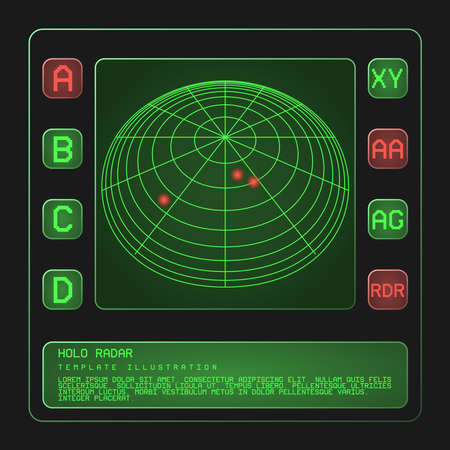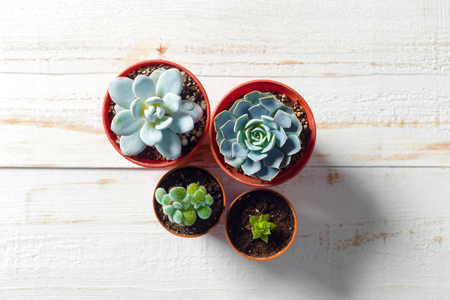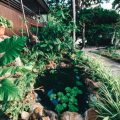Understanding Different Grow Light Technologies
When it comes to growing plants indoors, choosing the right grow light is one of the most important decisions youll make. There are three main types of grow lights commonly used in the U.S.: LED (Light Emitting Diode), fluorescent, and HID (High-Intensity Discharge). Each of these technologies works differently and has its own pros and cons when it comes to supporting plant growth indoors.
How Each Grow Light Works
LED Grow Lights
LED grow lights use small diodes that emit light when electricity passes through them. These lights are highly energy-efficient and can be customized to emit specific wavelengths of light that plants need for photosynthesis. LEDs stay cool during operation and last a long time—often up to 50,000 hours or more.
Fluorescent Grow Lights
Fluorescent lights work by passing an electric current through mercury vapor, which then emits ultraviolet (UV) light. This UV light excites a phosphor coating inside the bulb, producing visible light. T5 and CFL (compact fluorescent lamp) bulbs are common types used in indoor gardening. They’re affordable and great for seedlings or low-light houseplants.
HID Grow Lights
HID lights produce light by sending electricity between two electrodes inside a gas-filled tube. The two main types used for plant growth are Metal Halide (MH) and High-Pressure Sodium (HPS). MH bulbs give off a bluish light ideal for vegetative growth, while HPS bulbs emit a reddish-orange light better suited for flowering. These lights are powerful but generate a lot of heat and require external ballasts.
Grow Light Comparison Table
| Grow Light Type | Main Components | Light Spectrum | Lifespan | Heat Output | Best For |
|---|---|---|---|---|---|
| LED | Diodes, heat sink, driver | Customizable full spectrum | Up to 50,000+ hours | Low | All stages of plant growth |
| Fluorescent | Tubes or compact bulbs, phosphor coating | Mainly blue & white light | Around 10,000 hours | Low to medium | Seedlings, herbs, leafy greens |
| HID (MH/HPS) | Tubes with gas & electrodes, ballast | Bluish (MH) / Reddish (HPS) | Around 10,000–20,000 hours | High | Larger fruiting & flowering plants |
The Science Behind Plant Growth & Light Spectrum
Plants rely on specific wavelengths of light for photosynthesis—mainly blue and red. Blue light helps with leaf and stem development during the vegetative stage, while red light supports flowering and fruiting. Full-spectrum grow lights aim to mimic natural sunlight by providing a balanced mix of both. Understanding how each grow light delivers these spectra can help you make the best choice for your indoor garden.
2. Energy Efficiency and Cost Over Time
When choosing the right grow light for your indoor plants, its important to look beyond the upfront cost and consider how much energy each type of light uses, how long it lasts, and what that means for your wallet over time. Lets break down the energy efficiency and long-term costs of LED, fluorescent, and HID grow lights to help you make a smart choice for your indoor garden.
Energy Consumption
Different types of grow lights use different amounts of electricity. This impacts not only your monthly utility bill but also how eco-friendly your setup is.
| Grow Light Type | Average Wattage (per bulb) | Energy Efficiency |
|---|---|---|
| LED | 30–300W (depending on size) | High – uses up to 50% less energy than other types |
| Fluorescent (CFL/T5) | 20–100W | Moderate – more efficient than HID but less than LED |
| HID (MH/HPS) | 250–1000W | Low – consumes more power for same light output |
Lifespan of Grow Lights
The lifespan of a grow light determines how often youll need to replace it, which adds to your long-term costs.
| Grow Light Type | Average Lifespan (hours) | Replacement Frequency |
|---|---|---|
| LED | 35,000–50,000+ | Every 7–10 years (with regular use) |
| Fluorescent | 7,000–15,000 | Every 1–2 years |
| HID | 10,000–24,000 | Every 1–3 years |
Total Cost Over Time
The true cost of a grow light includes its initial price, how much electricity it uses, and how often it needs replacing. Here’s an estimated comparison based on typical home gardening use over five years:
| Grow Light Type | Initial Cost (per fixture) | Total Estimated Cost Over 5 Years* | Notes |
|---|---|---|---|
| LED | $100–$300+ | $200–$400 (lower energy + long lifespan) | Higher upfront cost but pays off long term |
| Fluorescent | $30–$100+ | $250–$500 (moderate energy + frequent replacement) | A good mid-range option for beginners or small spaces |
| HID | $60–$150+ | $400–$700+ (high energy + bulb replacement) | Suits large-scale growers but higher running costs |
*Estimates vary depending on usage hours per day and electricity rates in your area.
The Bottom Line on Energy and Cost Efficiency
If youre looking for the most cost-effective solution in the long run, LEDs stand out as the best option thanks to their low power usage and impressive lifespan. Fluorescents offer a budget-friendly starting point with decent efficiency, while HIDs may be better suited for experienced growers who need intense light but are prepared for higher ongoing costs.

3. Light Spectrum and Plant Growth Needs
When it comes to indoor gardening, understanding the light spectrum and how it impacts plant growth is key. Different types of grow lights—LED, fluorescent, and HID—emit different spectrums and intensities of light, which can influence how well your plants grow during each stage: seedling, vegetative, and flowering.
Understanding the Light Spectrum
Plants use light primarily in the blue (400–500 nm) and red (600–700 nm) parts of the spectrum for photosynthesis. Blue light supports leaf and stem development, making it ideal for seedlings and vegetative growth. Red light helps trigger flowering and fruit production. A balanced spectrum that includes both is important for full-cycle growth.
How Each Light Type Delivers Spectrum and Intensity
| Light Type | Spectrum Range | Best For | Light Intensity |
|---|---|---|---|
| LED | Customizable (full-spectrum options available) | All stages – seedling to flowering | High (adjustable with dimmers) |
| Fluorescent (CFL/T5) | Mainly blue; limited red output | Seedlings and early vegetative stage | Low to moderate |
| HID (MH & HPS) | MH: blue-heavy | HPS: red-heavy | MH: vegetative | HPS: flowering | Very high (requires ventilation) |
Matching Light to Plant Stage
Seedling Stage:
This stage requires gentle but effective lighting, mainly in the blue range. Fluorescents work well here due to their low heat output, though LED panels with adjustable spectrums offer more flexibility.
Vegetative Stage:
During this phase, plants need strong blue light to support leafy growth. Metal Halide (MH) bulbs are a good choice for traditional setups, while LEDs allow growers to dial in just the right balance of blue light without excess heat.
Flowering Stage:
This is when plants crave more red light to encourage blooming or fruiting. High Pressure Sodium (HPS) lamps deliver intense red light but get hot quickly. Full-spectrum LEDs can mimic this effect efficiently without the heat burden.
Final Tips on Choosing Based on Spectrum Needs
If youre growing through all stages indoors, LEDs offer the most flexibility with tunable spectrums and lower electricity usage. However, if youre starting small or focusing on specific phases, fluorescent or HID options might still have a place in your setup depending on your budget and space limitations.
4. Heat Output and Space Considerations
When choosing a grow light for your indoor garden, heat output is a major factor—especially if youre working with limited space or growing delicate plants that can’t handle high temperatures. Different types of grow lights generate different amounts of heat, and understanding this can help you make the best decision for your setup.
How Much Heat Does Each Light Type Produce?
Heres a quick comparison of the typical heat levels produced by LED, fluorescent, and HID grow lights:
| Grow Light Type | Heat Output | Best For Small Spaces? |
|---|---|---|
| LED | Low | Yes ✅ |
| Fluorescent | Moderate | Yes, with ventilation ⚠️ |
| HID (MH/HPS) | High | No ❌ |
LED Grow Lights: Cool and Compact-Friendly
LEDs produce very little heat compared to other options. This makes them perfect for small grow tents, shelves, or closets where airflow might be limited. Plus, because they stay cool to the touch, you can place them closer to your plants without risking burns.
Fluorescent Lights: Mild but Manageable Heat
Fluorescent lights like T5s or CFLs give off more heat than LEDs but are still manageable in most indoor settings. If youre using fluorescent lights in a tight space, adding a small fan or keeping the room ventilated should be enough to keep temperatures in check.
HID Lights: Powerful but Hot
Metal Halide (MH) and High-Pressure Sodium (HPS) lights put out a lot of light—but also a lot of heat. These are better suited for larger grow rooms with good airflow and proper cooling systems. Using HID lights in a compact space without ventilation can lead to overheating and plant stress.
Tips for Managing Heat in Tight Spaces
- Add ventilation: Use fans or exhaust systems to move hot air out.
- Monitor temperatures: Use a thermometer to track how warm your grow area gets.
- Choose low-heat lights: If space is tight, LEDs are often your safest bet.
- Avoid overcrowding: Too many lights or plants in one spot can trap heat.
Selecting the right grow light isn’t just about brightness—it’s also about how well it fits your indoor space and environment. Keep these heat considerations in mind to create a healthy home for your plants.
5. Best Use Cases for Each Light Type
Choosing the right grow light really comes down to what you’re growing, how much space you have, and your overall gardening goals. Here’s a breakdown of which type of light—LED, fluorescent, or HID—is best suited for different situations.
Leafy Greens and Herbs
If youre growing lettuce, spinach, kale, basil, mint, or other leafy greens and herbs, you don’t need extremely intense lighting. These plants thrive under moderate light conditions and benefit more from even coverage than high intensity.
| Light Type | Best Features | Why It Works |
|---|---|---|
| Fluorescent (T5 or CFL) | Low heat, energy-efficient, affordable | Perfect for small setups and seedlings; gentle on delicate herbs |
| LED | Custom spectrum options, low heat output | Ideal for long-term herb gardens with consistent growth |
Flowering Plants and Fruiting Vegetables
Tomatoes, peppers, strawberries, and flowering houseplants like orchids or African violets require stronger light to trigger blooms and fruit production. This is where power and spectrum become especially important.
| Light Type | Best Features | Why It Works |
|---|---|---|
| HID (HPS/MH) | High-intensity output, great for blooming phases | Excellent for large grows with serious flowering goals |
| LED (Full-spectrum) | Tunable spectrum, energy savings over time | Great for both vegging and flowering in a compact setup |
Seed Starting and Cloning
Younger plants need gentle but consistent light to root properly without drying out. Uniformity and low heat are key here.
| Light Type | Best Features | Why It Works |
|---|---|---|
| Fluorescent (T5) | Cools easily, provides soft light close to seedlings | Keeps young plants safe while encouraging early growth |
| LED (Low-wattage) | Dimmable options available, low heat output | Saves energy while supporting healthy rooting |
Grow Tent Sizes and Space Considerations
Small Spaces (2×2 ft – 4×4 ft)
If you’re working with a small grow tent or closet space:
- LED: Compact panels fit well and provide targeted lighting.
- Fluorescent: Great option for tight vertical spaces or shelving systems.
Larger Grow Areas (5×5 ft and above)
- HID: Offers strong penetration but needs good ventilation due to heat.
- High-power LED: Good alternative to HID with better energy efficiency.
Your Gardening Goals Matter Too
| Your Goal | Recommended Light Type |
|---|---|
| Sustainable hobby gardening (herbs & greens) | Fluorescent or entry-level LED |
| Bountiful harvests (fruits & flowers) | Full-spectrum LED or HID system |
| Cultivating rare or tropical plants indoors year-round | Tunable full-spectrum LED with adjustable settings |
No matter what you’re growing—from fresh basil on your kitchen counter to vibrant tomatoes in a backyard shed—there’s a grow light that fits your needs just right. Picking the right one makes all the difference in your indoor garden’s success.
6. Making the Right Choice for Your Setup
Choosing the best grow light for your indoor garden doesnt have to be complicated. It really comes down to three key things: your budget, the types of plants youre growing, and the space where youre setting everything up. Let’s break it down so you can make a smart and easy decision.
Your Budget
If youre just starting out or working with a tight budget, fluorescent lights (like T5 or CFLs) are affordable and easy to find. They’re great for herbs, leafy greens, or seedlings. On the other hand, if you’re ready to invest in something long-term, LED grow lights cost more upfront but save money over time because they use less energy and last longer.
Your Plants’ Needs
Different plants have different light needs. Here’s a quick guide to help:
| Plant Type | Best Light Option |
|---|---|
| Seedlings & Herbs | Fluorescent or LED |
| Leafy Greens (lettuce, spinach) | Fluorescent or LED |
| Flowering Plants (tomatoes, peppers) | LED or HID |
| Fruit-Bearing Plants (citrus, strawberries) | LED or HID |
| Tropical Houseplants | LED (full spectrum) |
Your Indoor Gardening Space
The size and layout of your indoor garden also play a big role in choosing the right light. If you’re working with a small shelf or closet grow space, go for compact LEDs or fluorescent tubes that fit easily without overheating. For larger grow tents or garage setups where you need intense light coverage, HID systems might be worth considering—just keep in mind they get hot and usually need extra ventilation.
Quick Tips:
- Small spaces: Try low-heat options like LEDs or fluorescents.
- Larger grow areas: Consider high-output LEDs or HIDs for full plant coverage.
- No natural sunlight? Choose full-spectrum LEDs to mimic daylight.
- Noisy fans a problem? Go with passive-cooled LED panels that run quietly.
- Aim for flexibility? Look for adjustable lights that let you change intensity and spectrum as your plants grow.
The right grow light helps your plants thrive without wasting energy or space. Think about what works best for your home and gardening goals before making the switch.


